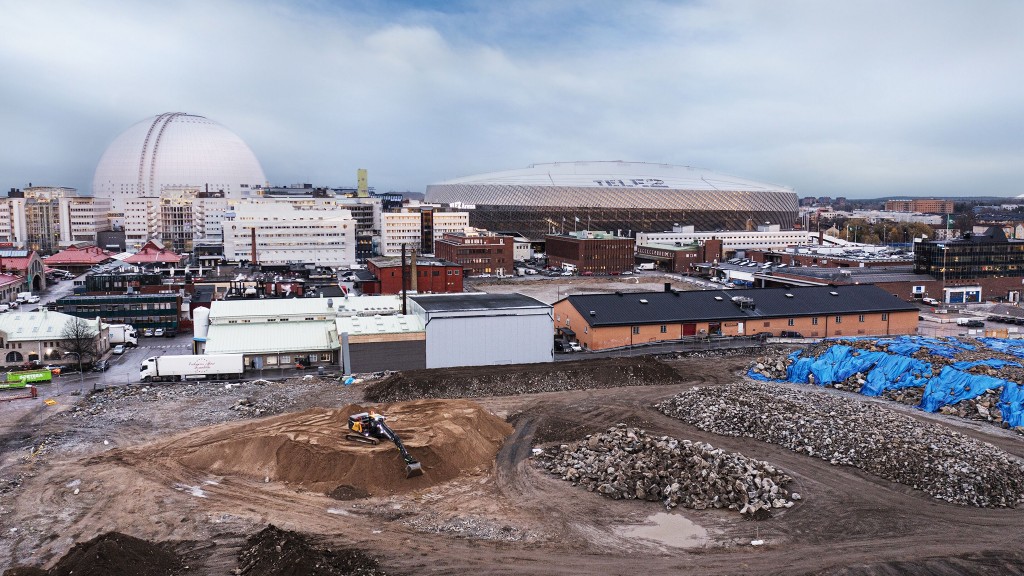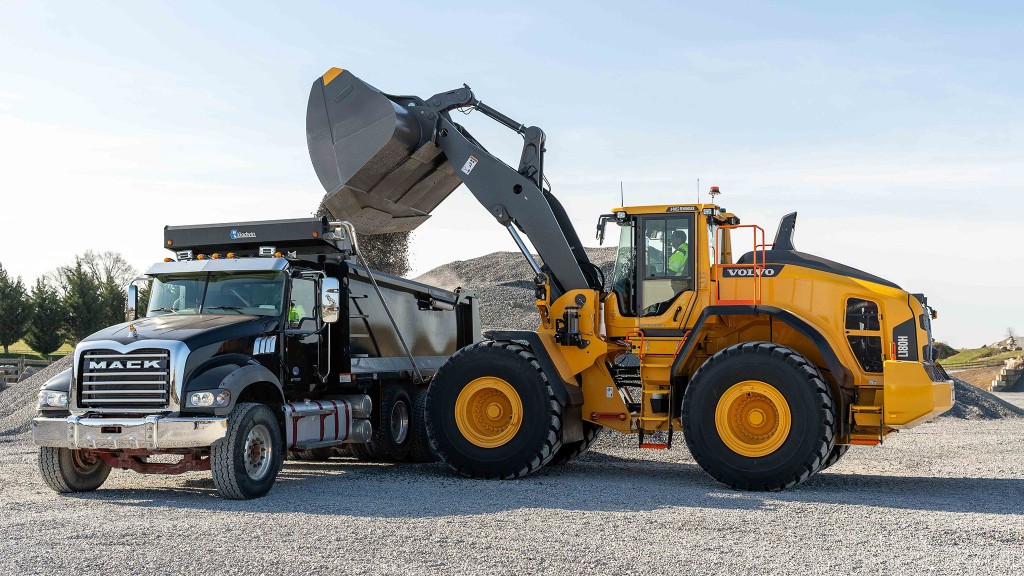
The 100-year-old ‘Slakthusområdet' area of Stockholm city centre in Sweden, also known as the meat-packing district, is undergoing an impressive transformation. Now at the halfway point of the project, a CO2 emission reduction of 1,808 tons has been delivered - that's the same as 180 Swedish people produce in one year - thanks to the close collaboration and dedication of partners including Stockholm City, Skanska, and Volvo CE.
The use of electric equipment accounts for 421 tons. The remaining 840 tons are due to the use of HVO100 (Hydrotreated Vegetable Oil) fuel and 547 tons are due to a reduction in transport and the reuse of excavated materials or ‘circular construction' methods.
The key sustainability requirements listed in the tender were:
- 100 percent fossil-free site
- Use of HVO100 fuel onsite and for transport to and from site
- 10 percent electric operation
"Stockholm City is committed to driving sustainability initiatives forward. At Slakthusområdet we are showing that, with the right mindset, the right solutions, and the right partners, fossil-free sites are very much possible. What was a ground-breaking approach just one year ago is now becoming the standard for construction, and other municipalities are inspired by our lead," said Anders Österberg, Deputy Mayor, Stockholm City. "The project is providing a valuable testbed with considerable learnings. We make this happen by collaborating with like-minded partners who recognize and understand the challenges and have courage and dedication."
Tender requirements called for 100 percent fossil-free work
Stockholm City recognizes the vital role it has in driving change in construction, which is why in its tender requirements for Slakthusområdet it demanded that the job site be 100 percent fossil-free. Skanska and Volvo CE welcomed the initiative and have risen to the challenge. Innovative solutions are being deployed to cut CO2 emissions, an important part of which includes the use of electric machines to deliver on a requirement for at least 10 percent emission-free machine operation.
Tora Leifland, Head of Public Affairs at Volvo CE, said: "What we are doing at Slakthusområdet shows that sustainable construction sites are not just for the future, they're already here - electrified, more efficient and with an improved working environment. At Volvo CE, we want to encourage more cities to follow Stockholm's example and include emission-free requirements in their contracts. Procurement is the key to transition - make demands and the solutions will be found. This is how we will accelerate the development to a sustainable future."
A 23-ton Volvo EC230 Electric excavator is supporting excavation work on-site, which includes 56,500 cubic metres of soil and 25,000 cubic metres of rock. Charging is generally done overnight, with fast charging via a Volvo mobile power unit during breaks if required. The reduction in noise from using an electric over a conventional machine has improved the working environment for those in and around the machine.
In addition, the use of award-winning digital service Efficient Load Out, provided by Volvo CE entity Global Load Out Solutions, has helped Skanska to track and trace all mass transports, providing transparency on truckload fill rates to minimize the number of outgoing transports from the site.
Crushing and sorting of the excavated materials is being done on-site, with around 95 percent of all materials used produced from the extracted debris. Added to this, materials purchased for use on the project have a high proportion of recycled or reused content.
The initiatives deployed at Slakthusområdet are providing valuable insights, not just for those involved in the project but for the wider industry too, as well as garnering national and international interest with other municipalities, many of whom have sent representatives to visit the site. One key learning is that it is possible today to construct more sustainably and when environmental targets are set from the outset, projects become more lean and efficient, resulting in reduced transport and delivering cost benefits. By testing new technologies and methods it will help drive the transformation that is required in the industry.
Lisa Kroon, Project Manager at Skanska, said: "It is important that our clients set high standards in their procurements, just as Stockholm City has done in the Slakthusområdet area, both in terms of fossil-free and emission-free operations. High demands to tackle climate change is a challenge that we like. The collaboration with Volvo CE has been important for us in meeting the requirements. Together, we have been able to challenge building standards and find new ways of working."
Stockholm is not alone in its ambition for fossil-free construction sites, an important step as it works towards its ambition to be fossil-free and climate positive by 2040. Oslo and the Netherlands lead the way, with Oslo Municipality targeting emission-free construction projects by 2025, whilst the Netherlands aims to half CO2 emissions in the construction industry by 2030 and to completely ban emissions from it by 2050. Key to delivering on this ambition is a commitment that all public tenders will be circular from 2030 onwards. Volvo CE and Skanska are fully supportive of this type of approach, as they believe procurement has a fundamental role to play in driving the need for change.



